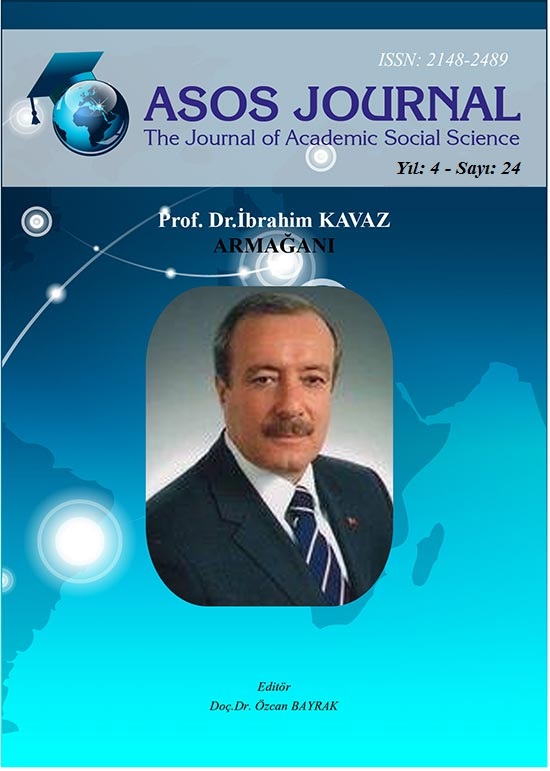HAMZA-NÂME ADLI ESERİN 72. CİLDİNİN ATASÖZ, DEYİM, İKİLEME VE BEYİTLERİN ANLAM VE GÖREV YÖNÜNDEN İNCELENMESİ
Author :
Abstract
Yapılan çalışmada Hamza-nâme adlı eserin atasözü, deyim, ikileme ve beyitlerin anlam, tür ve görev yönünden incelemesi gerçekleştirilmiştir. Hamza-nâme adlı eserin ilgili literatür kapsamında genel özelliklerine ve eserin yazım konusundaki yazar hakkında bilgiler sunulmuştur. Hamza-nâme eseri Ahmedî’nin kardeşi Hamzavî tarafından yazı metinine geçirilmiştir. Ele alınan metin incelemesinden yola çıkarak Hamza-nâmelerin yazılı metin haline gelmeden önce sözlü bir gelenek olarak Türkler ve İslami coğrafyada itibar gördüğü anlaşılmaktadır. Hamza-nâme, zengin bir destan edebiyatı ile İslam dünyasına katılan İran ve Arabistan dünyasına aynı zamanda da diğer Müslüman milletlere tarih ve kültürüne de katkısı olduğu görülebilmiştir. Araştırmada Hamza-nâme eserinin atasözü, deyim, ikileme ve deyimler ele alınmıştır. Eserde yer alan kelime ve kelime gruplarının dönemin dil uslubu takip edilmiştir. Araştırmada eserin işlevsel yönü bakımından kelimeler incelenmiştir. Atasözü, deyimler asıl anlamlar
Keywords
Abstract
In the research carried out about Hamze-name, the sayings, idioms, reduplications and couplets have been examined in there functioning structures and types. Hamze-name has been studied in the intentions of literature, underlining general features and the language used by the author. Hamze-name has been converted into written text by Ahmedi’s brother Hamzavi. Within the examined study that has been done about the Hamza-name art work, it is of ease to understand and mention that; before Hamze-name was interpreted into written text, it was an oral tradition spoken by Turks and it had an important dignity within the Islamic world. With the context of rich epical literature, Hamze-name has contributed to the Islamic to the Islamic world but besides this, it has extended historical and cultural alikeness to the new comers of the Muslim nation which were Iran and Arabia. In the study, Hamza-name’s sayings, idioms, reduplications and couplets have been examined. The words and word groups that





